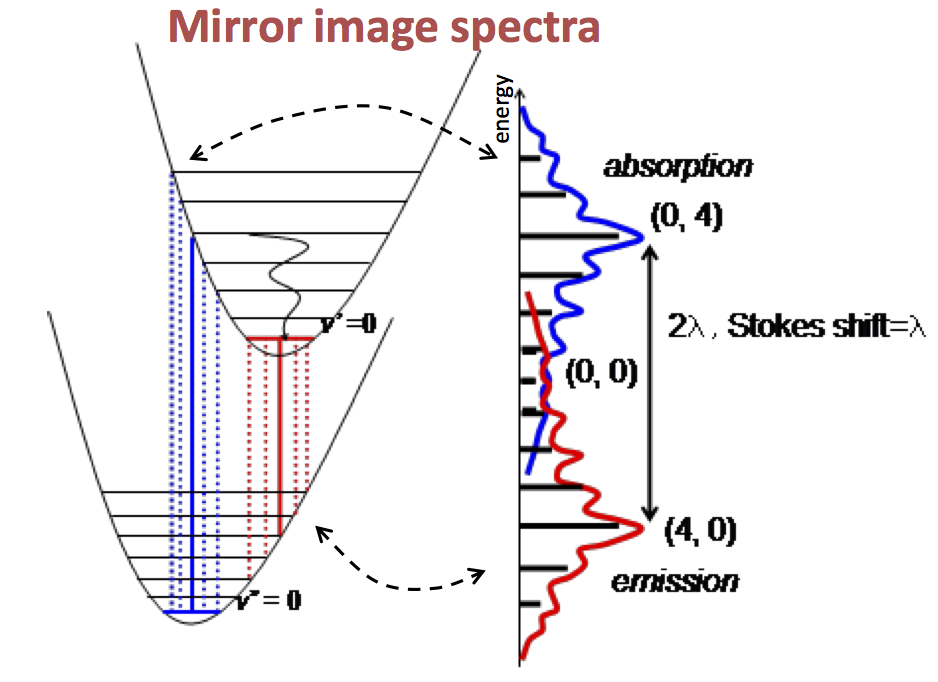An alternative and probably more accurate way to estimate the $E_{0{-}0}$ for a molecule in solution is to take half the difference between absorption and fluorescence peaks. To do this first convert these wavelengths to wavenumbers, then add half the difference to the fluorescence peak (or subtract from absorption) and convert back to wavelengths.
(As an experimental observation you should also try, if possible, to get better quality absorption and emission spectra as negative values are meaningless and this suggest that your background subtraction is not quite correct).
The figure below shows the relationship between absorption and fluorescence spectra when the absorption is the mirror image of the fluorescence. (Note that the spectra on the right of the figure are not on the same scale with the energy levels on the left.) A mirror image does not quite occur with the spectra in your question, but the principle is the same. The reason that the fluorescence comes from the lowest vibrational level in the excited state is that the rate of vibrational relaxation (thin wavy line), caused by energy transfer to surroundings (usually solvent), is almost always far faster than emission. If the potential energy surfaces are not displaced horizontally, indicating different bond lengths in ground and excited state, then by the Franck-Condon Principle almost no transitions will be observed.

